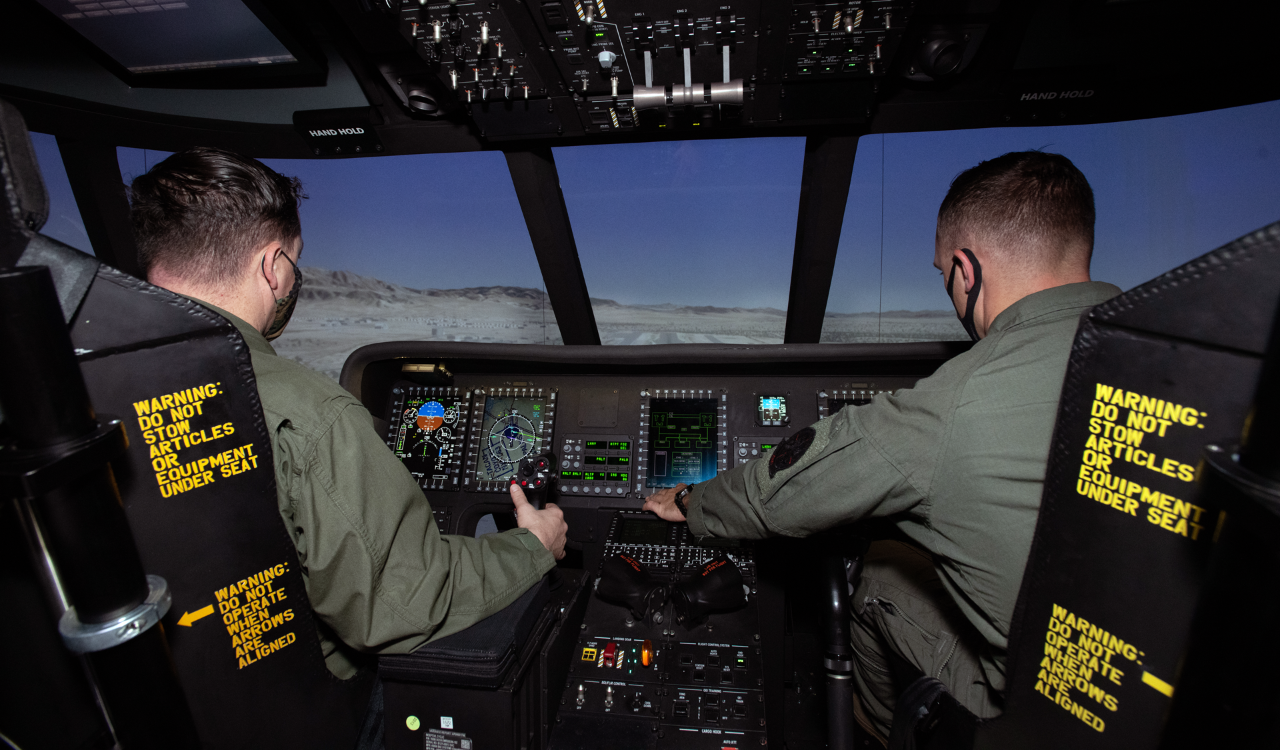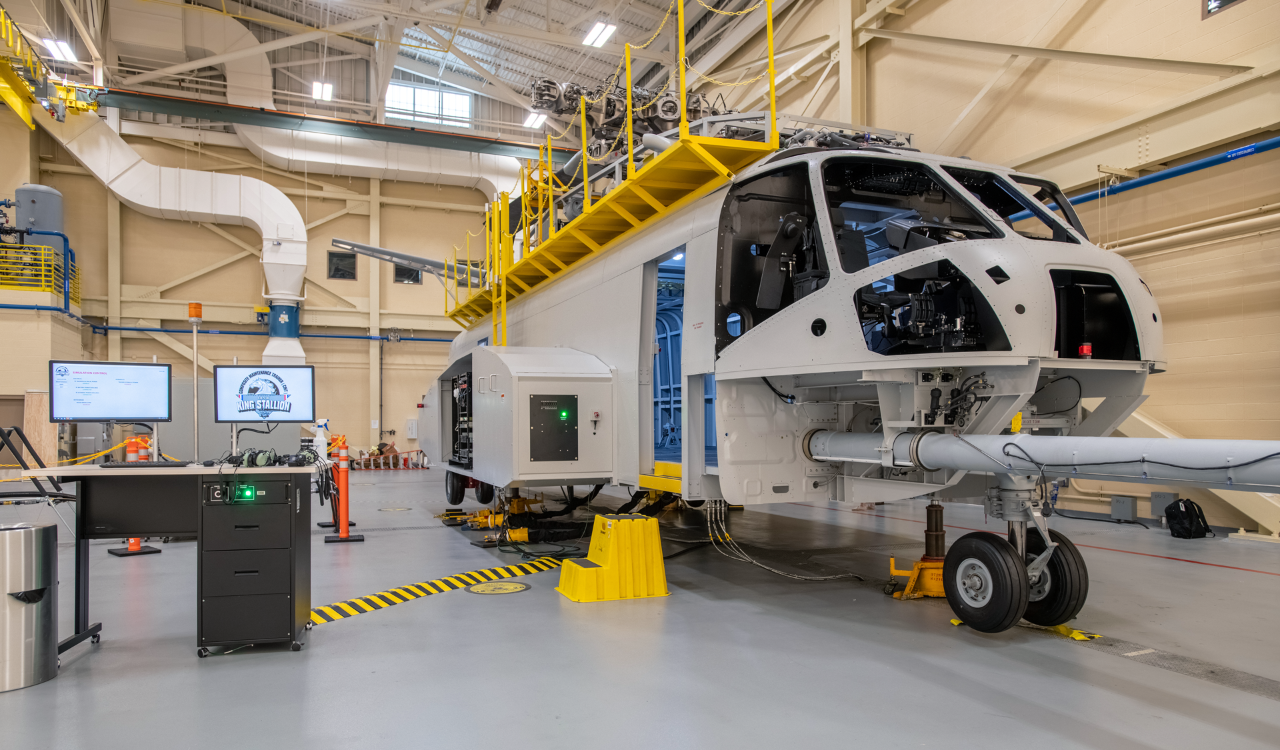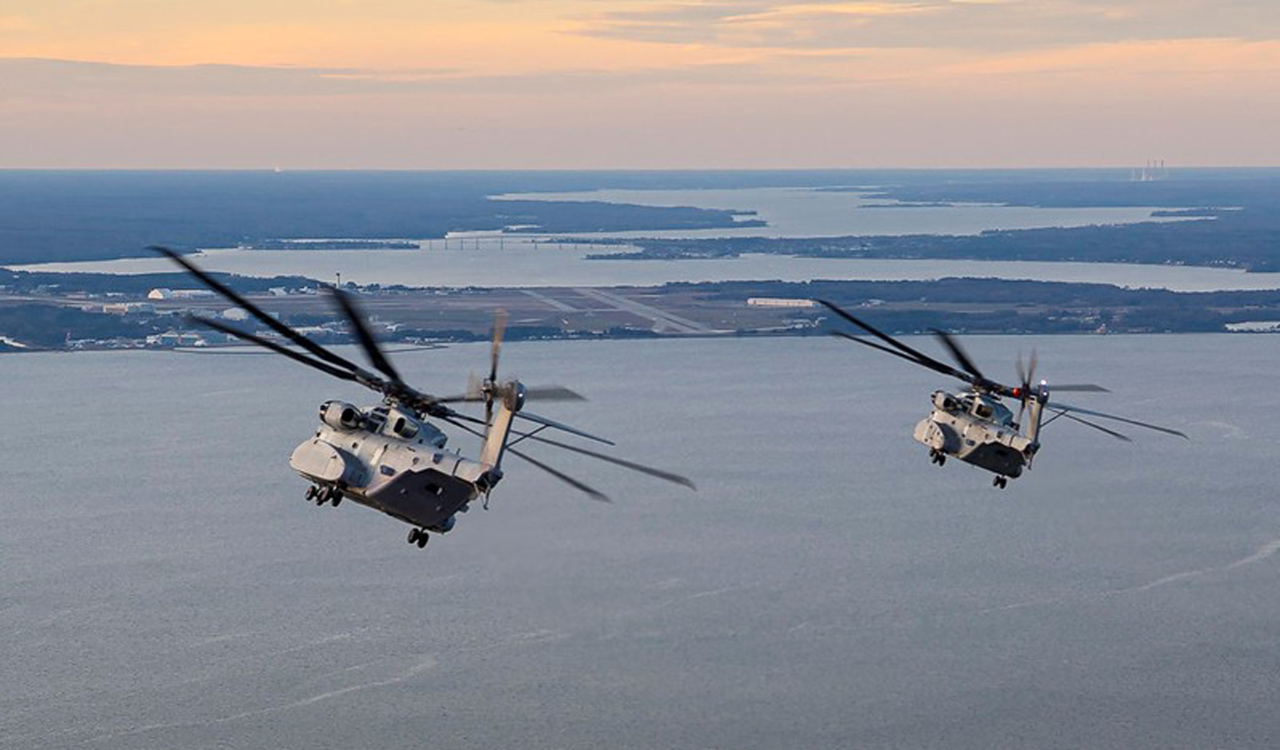U.S. Marines are now preparing to fly, maintain and sustain the CH-53K heavy lift helicopter, which will enable them to safely complete longer-range missions in harsher environments compared to the current fleet of aircraft. The suite of training devices at Marine Corps Air Station (MCAS) New River in Jacksonville, North Carolina, were recently declared Ready for Training.
“These training devices will prepare aircrew and maintainers for the full suite of capabilities of the CH-53K in a safe and cost-effective manner,” said Tom Gordon, Lockheed Martin, vice president of Training and Simulation Solutions. “Crews can rehearse for operational deployment, ensuring the U.S. Marines are ready to successfully complete their missions.”
Aircrew Ready for Anything
The Containerized Flight Training Device (CFTD) is a portable full-mission flight simulator that will allow flight crews to train on the full scope of Marine Corps heavy lift missions, including external lift operations.
The Marines began training with the CFTD earlier this year. Capt. Nick Moran, U.S. Marine Corps operational test pilot for the CH-53K and CH-53E shared, “The scenarios for the system in the simulator there’s nothing we cannot program it to do that we would not find in real life.”
The CFTD replicates the functionality, flight characteristics, mission profiles and unmatched capabilities of the CH-53K helicopter. Lt. Col. Jonathan Morel, USMC, retired, CH-53K test pilot for KBR explained, “What we realized this simulator here is as close to the aircraft as any flight simulator I’ve seen before.”
The device can replicate the various environmental conditions that the aircraft is likely to fly in as well as a multitude of mission profiles in the operation of a true heavy lift helicopter.

Marine Corps CH-53K test pilots Capt. Nick Moran and Lt.Col. Kelly Atwood in the CH-53K Containerized Flight Training Device (CFTD) experience a highly immersive virtual environment.
Maintaining for the Mission
The Helicopter Emulation Maintenance Trainer (HEMT) and Composite Maintenance Trainer (CMT) are both purpose-built for the King Stallion’s maintenance training.
The HEMT is a computer-based lab that familiarizes the mechanic with maintenance tasks they perform, including tools, functions and checks. By virtually depicting the inside and outside of the aircraft and providing feedback, maintainers can learn many of the maintenance functions utilizing the HEMT prior to working on the aircraft.
The CMT is a full-scale mock-up of the aircraft and is the final step of familiarizing the maintainer with the aircraft. The device allows students to interact with the physical controls of the aircraft to learn to remove and install hardware and perform functional checks. An instructor operating system assigns tasks and monitors progress for focused feedback.
David Karcher, Lockheed Martin, senior specialist mechanic shared, “The benefit to a trainer like this is to create an environment that is somewhat realistic to a real aircraft but has safety in mind.”
“They will be able to go up there [on the CMT] and remove all the components and torque all the components just like [they will do on] the aircraft,” explained John Cooper, Lockheed Martin, procurement engineer.

The Composite Maintenance Trainer (CMT) is a full-scale mock-up of the aircraft, allowing students to interact with the physical controls.
King Stallion Production Marches On
These new training devices will make for a seamless transition to the aircraft when the program delivers the first low rate initial production aircraft in September 2021.
Morel agreed, sharing his experience with the CFTD “What we have seen so far with most pilots after conducting a reasonable amount of training in the simulator they walk out to the actual aircraft and they fly it as if they’ve been flying it for a year already.”
The CH-53K program has five aircraft on the final assembly line and over two dozen in various stages of production. In October, the U.S. Navy awarded Sikorsky a contract to build six more heavy lift helicopters.
Moran explained, “It’s going to be an entirely new system.” With production still underway, training devices for the CH-53K are critical to ensure the aircrew and maintainers are mission ready to receive this new system.

Sikorsky CH-53K King Stallion
CH-53K Proving Capabilities
The CH-53K is also nearing the conclusion of the developmental flight test events to support Initial Operational Test & Evaluation (IOT&E) in 2021 and first deployment in 2023-2024.
The CH-53K has flown more than 2,100 flight hours validating the aircraft’s performance, including testing on a ship and in both hot and cold environments. This year, the aircraft completed air-to-air refueling with a 27,000-lb. external load demonstrating its ability to enable heavy-lift transport from sea to shore.
“The training devices will ensure a flawless entry into service for the CH-53K heavy lift helicopter,” said Bill Falk, Sikorsky CH-53K program director. “We are proud to build this 21st century helicopter giving mission flexibility to the U.S. Marine Corps.”
The CH-53K, which can lift 36,000 pounds, is the most powerful heavy lift helicopter ever built in the United States. The King Stallion’s technologically advanced design will meet the future warfighting requirements for decades to come, enabling missions like humanitarian aid, troop and equipment transport, casualty evacuation (CASEVAC), support of special operations forces, and Tactical Recovery of Aircraft and Personnel (TRAP).
“Cause when you hear one of these big bad boys coming for you in the field to rescue you - you know you are in good hands,” Karcher said.




